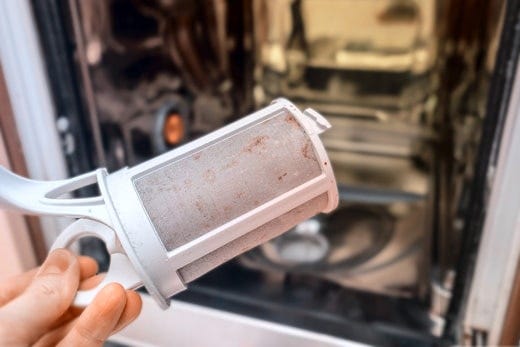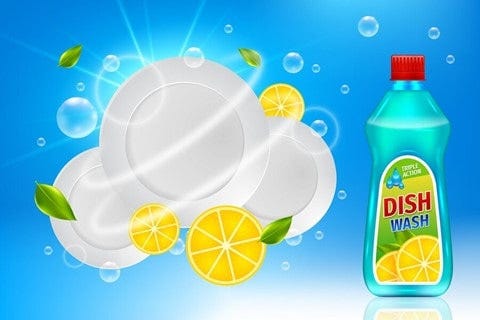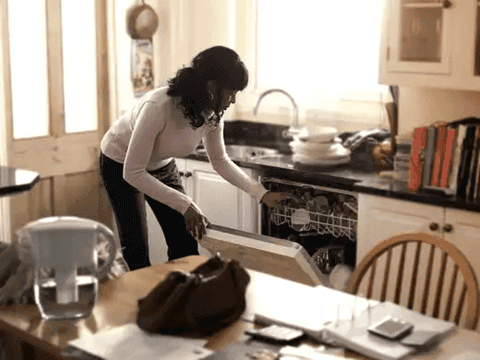
How to unclog a dishwasher
Use our Finish guide to dishwasher clog prevention and unclogging, including which products to use in order to do so.

“If you take care of your tools, then they’ll take care of you...” This is particularly important to remember when it comes to your dishwasher, which depends on being looked after to run at its optimal performance. One thing that can stop it from performing its best is if your dishwasher gets clogged. If this sounds familiar to you, here’s what you can do to prevent and fix the issue.
Why is my dishwasher clogged?
Your dishwasher can get clogged by a range of things. When you’re constantly using your dishwasher to clean away food, grease and other residue, this can clog your machine and stop things from moving. In addition, areas with hard water may face a build-up of limescale in the pipes, clogging the flow of contents.
Your machine could also be more likely to get clogged if you’re not scraping off large bits of food from your dishes and bakeware. It’s important to remember that you don’t need to rinse dishes before you put them in the dishwasher. After all, this wastes water unnecessarily! The combination of a quick (but thorough) scrape, a powerful Finish detergent used according to instructions, and a modern dishwasher used on the right settings are all you need. These three factors will make sure your dishes come out clean and shiny every time.
How to prevent a clogged dishwasher
In order to prevent a clogged dishwasher, you’ll want to use Finish Dishwasher Cleaner. Its formula cleans your dishwasher by fighting grease, limescale and odour in the hidden parts of your machine:
- Ensure that your machine is empty and does not contain any other soap or detergent.
- Remove the sticker from the top of the bottle (but keep the lid on) and place it upside down in a secure position.
- Close the door and set the machine on its hottest cycle, which will melt the wax layer away and release the contents of the bottle.
- Once the cycle is finished, remove the bottle and recycle it and use your dishwasher secure in the knowledge that it can work at optimal efficiency.
- Repeat once every 3 months for the best results.
How to clean a dishwasher that won’t drain
If your dishwasher isn’t draining, there may be a blockage that dishwasher cleaner can’t fix. If you need to clean a dishwasher with standing water, start by emptying your dishwasher for easy access to the machine. To do so, follow these steps to effectively drain the water from your dishwasher:
Turn the electricity off:
Make sure you turn off any electricity that is running to either your dishwasher or your garbage disposal (if applicable).
Remove the standing water:
Remove as much water as you can with a towel, cloth or other absorbent material.
Locate your drain hose:
This is what connects the dishwasher to your garbage disposal. You can usually find your drain hose under your sink or behind the dishwasher.
Remove and clean:
Once you’ve done this, you can use some pliers to disconnect the hose and begin clearing it out. We’d recommend using a commercial unclogging device such as a pipe cleaner to clean.
Check dishwasher drain:
Once you’ve made sure the drain hose is unclogged, it’s time to do the same with the dishwasher drain. You can locate this at the bottom of your dishwasher, which you remove with a screwdriver and do the same.
If you’ve done this and still can’t fix the clogged dishwasher, we’d suggest that it’s time to send in the professionals!
Every so often, it pays to clean your dishwasher inside and out. This will mean that it’s maintained better for longer, and your most valuable kitchen asset can continue to serve you in tiptop condition.


